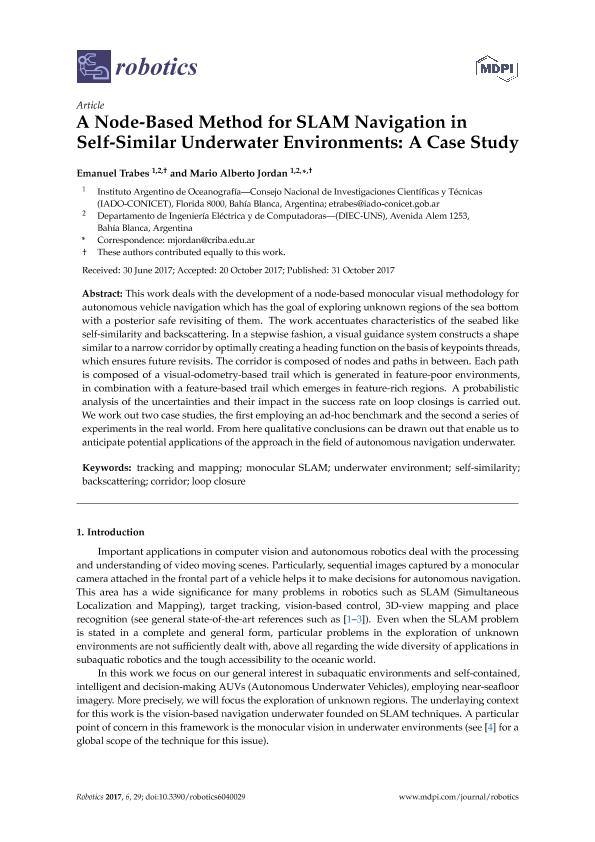Artículo
A node-based method for SLAM navigation in self-similar underwater environments: A case study
Fecha de publicación:
10/2017
Editorial:
MDPI AG
Revista:
Robotics
ISSN:
2218-6581
Idioma:
Inglés
Tipo de recurso:
Artículo publicado
Clasificación temática:
Resumen
This work deals with the development of a node-based monocular visual methodology for autonomous vehicle navigation which has the goal of exploring unknown regions of the sea bottom with a posterior safe revisiting of them. The work accentuates characteristics of the seabed like self-similarity and backscattering. In a stepwise fashion, a visual guidance system constructs a shape similar to a narrow corridor by optimally creating a heading function on the basis of keypoints threads, which ensures future revisits. The corridor is composed of nodes and paths in between. Each path is composed of a visual-odometry-based trail which is generated in feature-poor environments, in combination with a feature-based trail which emerges in feature-rich regions. A probabilistic analysis of the uncertainties and their impact in the success rate on loop closings is carried out. We work out two case studies, the first employing an ad-hoc benchmark and the second a series of experiments in the real world. From here qualitative conclusions can be drawn out that enable us to anticipate potential applications of the approach in the field of autonomous navigation underwater.
Archivos asociados
Licencia
Identificadores
Colecciones
Articulos(IADO)
Articulos de INST.ARG.DE OCEANOGRAFIA (I)
Articulos de INST.ARG.DE OCEANOGRAFIA (I)
Citación
Trabes, Emanuel; Jordan, Mario Alberto; A node-based method for SLAM navigation in self-similar underwater environments: A case study; MDPI AG; Robotics; 6; 4; 10-2017; 1-17
Compartir
Altmétricas




